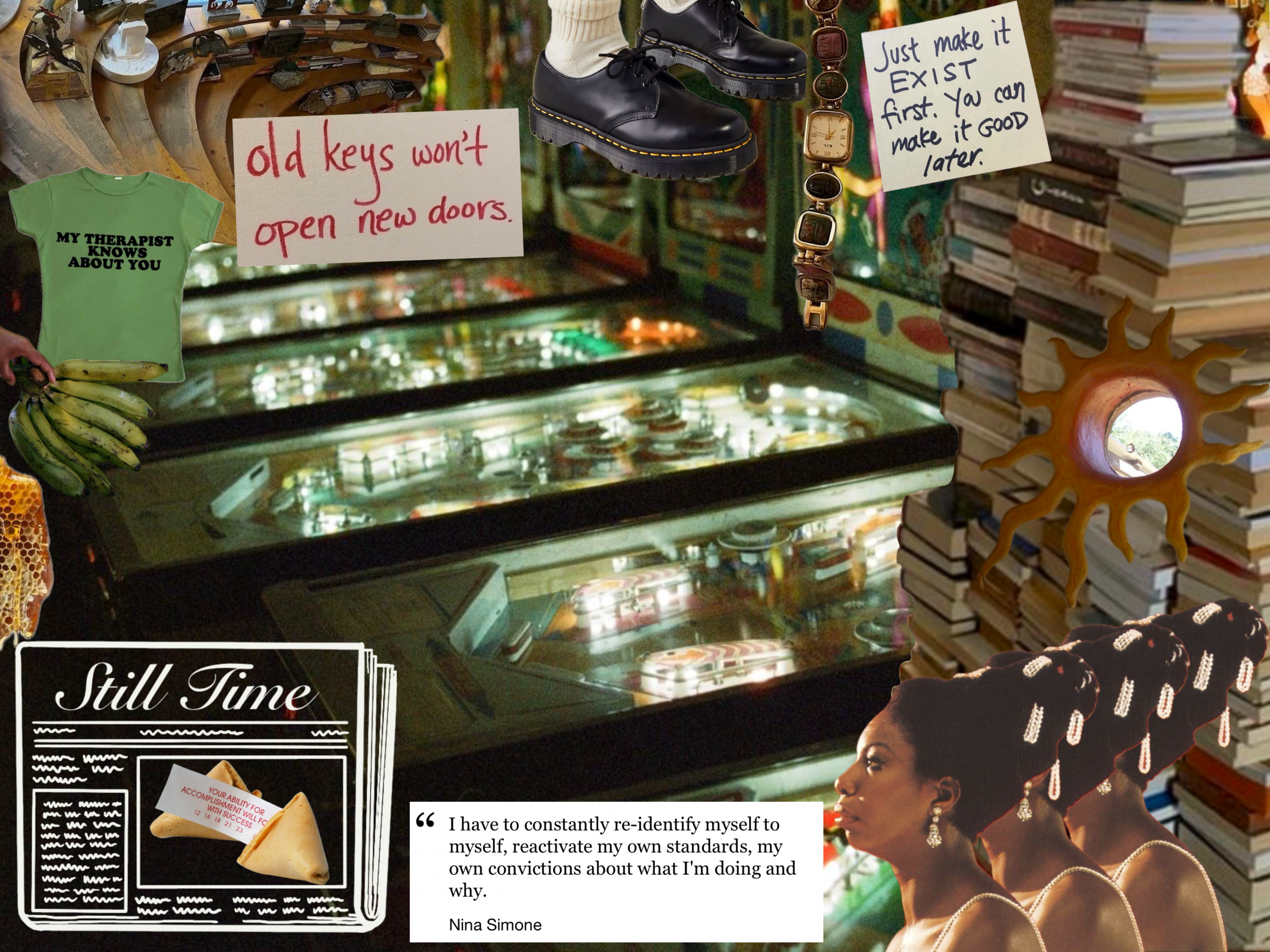I have to constantly re-identify myself to myself, reactivate my own standards, my own convictions about what I’m doing and why.
Nina Simone, (1968)
I haven’t written in months. Not because I didn’t want to, but because I kept pretending I didn’t have anything to say. Life has been happening in full force: exams, essays, moving out, letting go of people and projects that no longer served me. I took Spring cleaning too seriously because it felt like I was constantly closing revolving doors. The dizziness makes every part of you wants to pause but the world keeps spinning? That’s where I was. Wrapping up student radio. Letting a situationship die (boo, corny, lame). Leaving one place. Entering another.
And in all of that movement, the words just… left. It wasn’t writer’s block, exactly. It was more like everything I wanted to say got lost in transit. My brain was like a pinball machine — ideas bouncing everywhere, but going nowhere. Thoughts moving fast, but nothing landing. And when I sat down to write, it just felt… blank. But in the blankness, in the space between one thing and the next: a concept came back to me.
Still Time.
This idea first came up when I realised Thought Daughter Radio didn’t fit anymore.
As much as I loved it, I was tired of the pressure of always sound like I was thinking deeply. Tired of over-explaining myself. Tired of the pressure of everything sounding profound or esoteric, as they like to say. I just wanted to blast good music at 9am and put everyone onto my faves. And truthfully? The name didn’t even feel like mine to hold onto. “Thought Daughter,” a title birthed and raised by our generation is almost too universal.
So I asked myself: what does feel like mine?
I thought I’d figure it out over the summer and save the idea for next semester. Before Thought Daughter Radio was done, I started thinking about a new project. Something that didn’t demand performance or identity. Something slower. Lighter. More personal, but not in a diary kind of way. Something that made room. For questions. For pauses. For pacing.
Still Time.
One of the moments that shook me happened in a completely un-glamorous setting: a meeting on a stuffy spring afternoon in an even stuffier office with my Academic Advisor. I’m studying Anthropology and Data Analytics — a combination that confuses the very department that provides the program.
I had seen him at the beginning of the year and my interests had changed greatly, just like he said they would. So I wanted him to reach for his crystal ball. But instead he bluntly told me “I can’t advise you because the world is changing rapidly, so you’ll need to make your own career path” I was supposed to leave with clarity and yet my brain felt stuffier than the room—talk about being one with nature.
I remember walking home and just sitting with that. No blueprint. No next step. No guaranteed job. Just… build it yourself. It didn’t feel terrible after a while. Maybe because he said that was everyone’s reality, so there’s comfort in numbers. But also because I realised I could be whoever I want. A blessing and a curse.
Tasked with shaping a life I have seen before while honouring everything I’ve seen before. The blog, the show, the mood boards, the stories, the poems, my entire Notes app—there was time explore all the work I’ve always danced around. And when I knew that Still Time isn’t just a radio concept. Still Time is a whole way of being.
To me, Still Time is both a command and a comfort.
It’s a phrase that makes space for uncertainty. For stillness in motion. For moving at your own rhythm — not the internet’s, not your peers, not the clock’s. It’s a refusal to panic. It’s also a deep breath that reminds you: even if the world’s going a hundred miles an hour, your destination will still be there. It’s not about doing nothing. It’s about doing with intention.
It’s the moment when everything around you is spiralling and you say:
Wait. Let me be still. Let me choose what matters.
Sometimes I think my brain is a pinball machine.
Ideas bouncing off every surface, colliding with other thoughts, lighting up and disappearing again. And for a long time I thought that chaos meant I couldn’t focus, couldn’t produce, couldn’t get anything finished. But then I watched a video titled ‘Pinball isn’t as random as it seems’ and a line by Roger Sharpe (a pinball expert) stood out to me. He said:
The idea of pinball being totally random takes away from the idea that you can actually accomplish something you’ve never accomplished before.
Roger Sharpe, (2018)
That hit. The chaos isn’t random. The noise has patterns. The machine isn’t broken — it just moves fast.
The biggest hurdle for most people is that they think that the ball is not controllable … if you can slow [the game] down it’s to your advantage
Roger Sharpe, (2018)
That’s what I want this space to be.
Not a reaction to every thought.
But a slow game with intention.
A place where things land.
If you’re also somewhere in the middle — not quite sure, not quite stuck, not quite moving fast enough — this is for you.
If you’re rethinking who you are creatively, and what you want to make, and how much of yourself you actually want to share — this is for you.
If you’re 19, or 90, and the world keeps telling you to move faster, do more, be sure, be loud — but you’re choosing stillness anyway?
This is for you.
